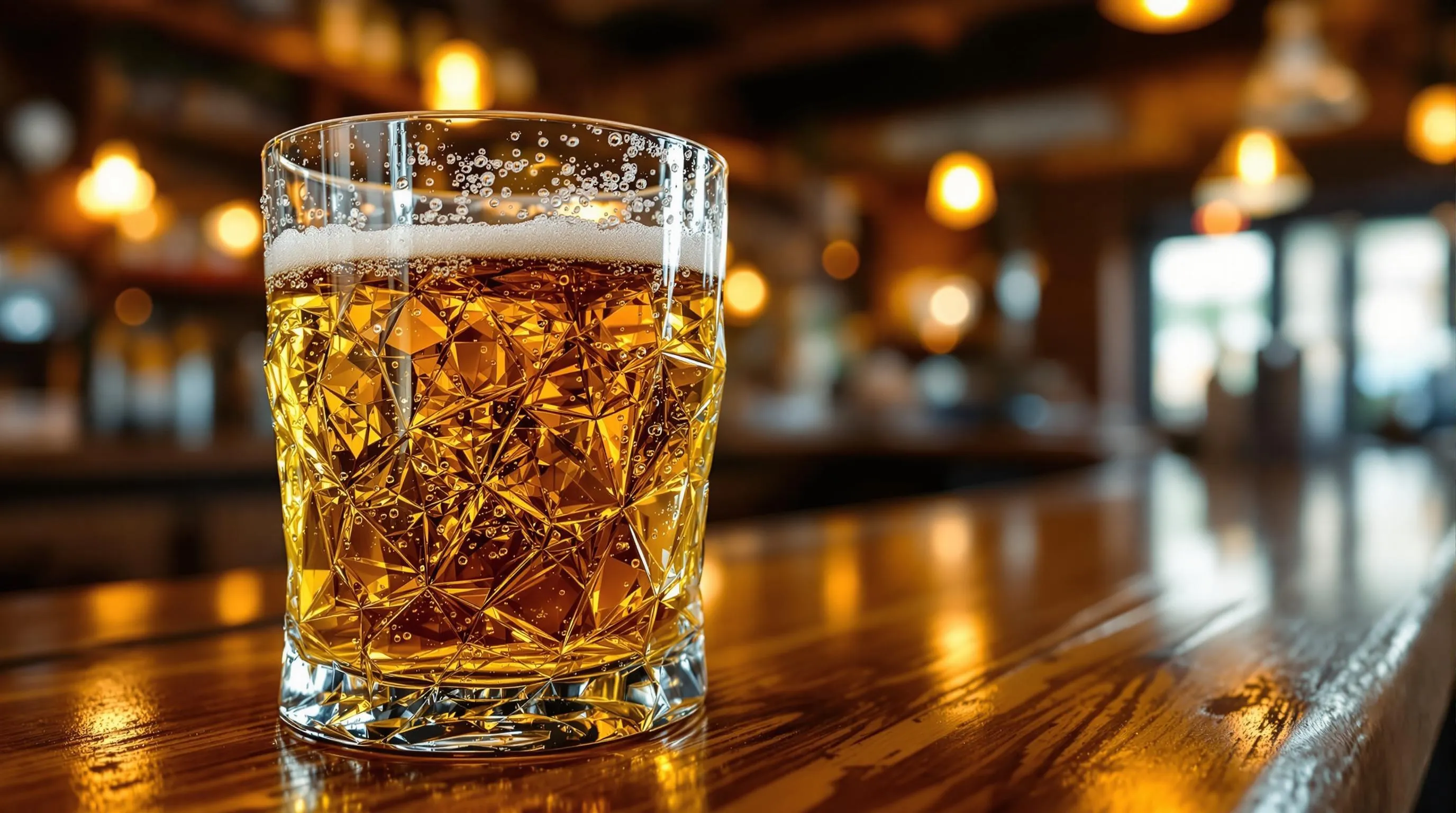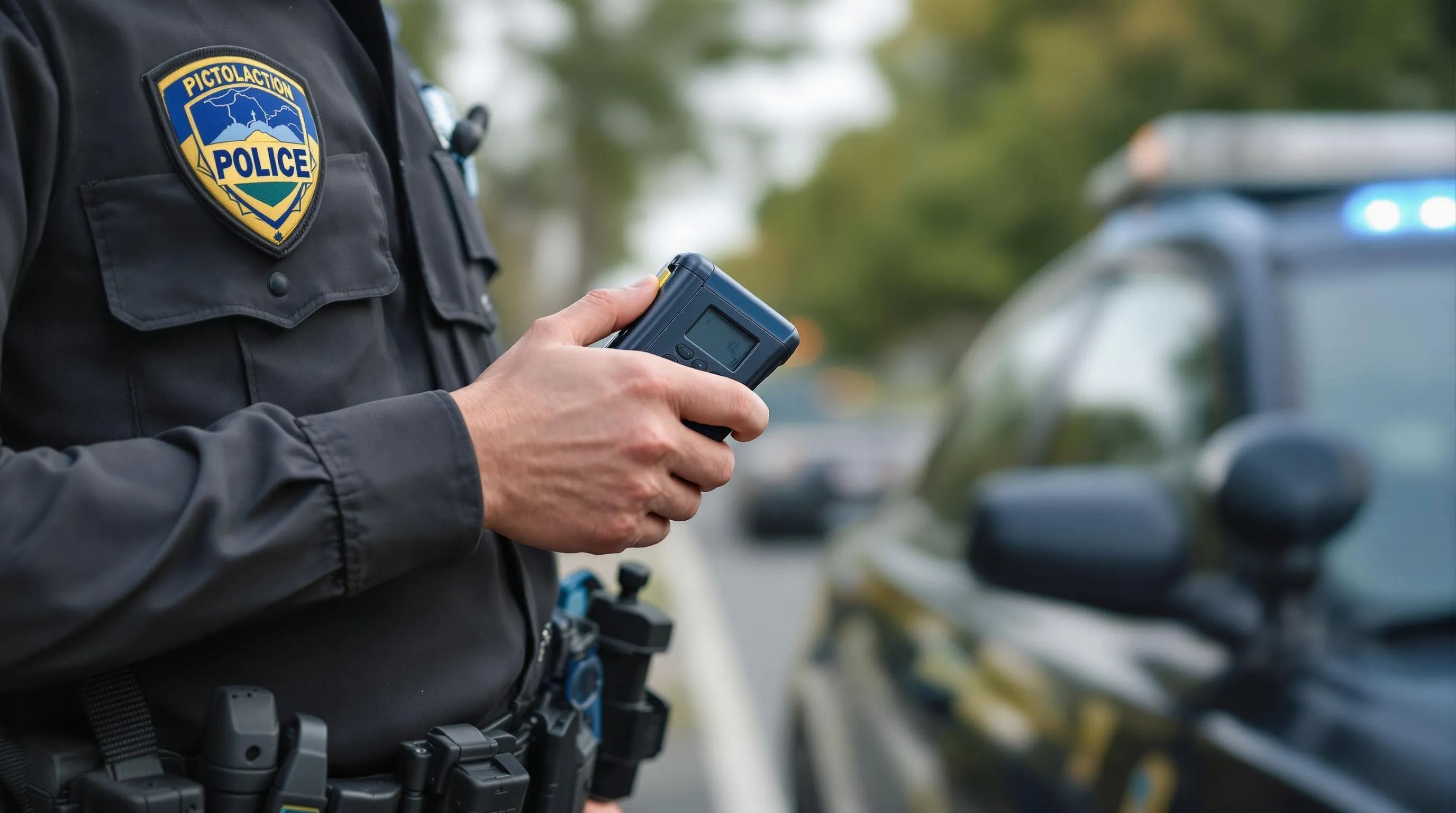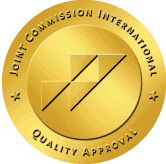Ever wondered why you might still feel the effects of last night’s drinks even after a full night’s sleep? The answer lies in your body’s complex process of metabolizing alcohol – a process that’s far more intricate than you might think.
Your liver works tirelessly to break down alcohol at a fixed rate of approximately one standard drink per hour, but several factors can influence how long alcohol remains detectable in your system. Your weight, age, sex, and overall liver health all play crucial roles in determining your personal alcohol metabolism timeline. While traditional urine tests can detect alcohol for 12-24 hours after your last drink, advanced testing methods can extend this detection window significantly.
Understanding alcohol’s journey through your body isn’t just about passing a test – it’s about making informed decisions for your health and safety. Whether you’re concerned about workplace testing or simply want to know when you’re truly clear to drive, knowing how alcohol affects your system can help you navigate these situations with confidence.
How the Body Processes Alcohol
Your body processes alcohol through a complex series of steps that begin the moment you take your first sip. Understanding this process helps explain why alcohol’s effects can linger long after you stop drinking.
Alcohol Absorption and Metabolism
Absorption happens rapidly once alcohol enters your digestive system. Your stomach absorbs approximately 20% of the alcohol you consume, while your small intestine handles the remaining 80%. This absorption occurs within 60 to 90 minutes of drinking, with alcohol quickly entering your bloodstream and circulating throughout your body.
Metabolism begins immediately as your liver starts working to break down the alcohol. Your body metabolizes between 90% and 98% of all consumed alcohol, with the remaining 2-10% eliminated through:
- Breath exhalation
- Urine excretion
- Sweat production
- Fecal elimination
Processing rates remain constant regardless of the consumption amount. Your body eliminates alcohol at approximately 0.015 BAC per hour, meaning someone with a 0.15 blood alcohol level requires about 10 hours to completely clear their system.
| Body Weight | Standard Drinks | Elimination Time |
|---|---|---|
| 120 lbs | 1 drink | 1.5 hours |
| 160 lbs | 1 drink | 1 hour |
| 200 lbs | 1 drink | 45 minutes |
The Role of the Liver
Primary processing occurs in your liver, which handles roughly 90% of alcohol elimination from your bloodstream. Your liver produces specific enzymes that break down alcohol through a two-step process:
Alcohol dehydrogenase (ADH) converts ethanol into acetaldehyde, a toxic compound that causes many hangover symptoms. This enzyme works at a fixed rate of approximately one standard drink per hour, regardless of how much alcohol you’ve consumed.
Aldehyde dehydrogenase (ALDH) further breaks down acetaldehyde into acetate, which your body then converts into harmless water and carbon dioxide for elimination.
Enzyme production varies significantly between individuals based on:
- Genetic factors affecting enzyme levels
- Age-related changes in liver function
- Gender differences in enzyme concentration
- Overall liver health status
Processing capacity remains limited because your liver can only metabolize alcohol at its fixed rate. When consumption exceeds this processing capacity, excess alcohol accumulates in your bloodstream, leading to higher BAC levels and extended detection times in various body systems.
Factors That Affect How Long Alcohol Stays in Your System

Multiple biological and behavioral factors influence how quickly your body processes alcohol and how long it remains detectable in various tests. Understanding these variables helps explain why alcohol clearance times vary significantly between individuals.
Age and Biological Sex
Age significantly impacts alcohol metabolism due to changes in liver function and blood flow over time. Older adults process alcohol more slowly because their liver efficiency decreases with age, and reduced blood circulation affects alcohol distribution throughout the body. This slower processing means alcohol remains detectable longer in older individuals compared to younger adults.
Biological sex creates substantial differences in alcohol metabolism rates. Women typically retain alcohol in their systems longer than men due to several physiological factors:
- Body composition: Women generally have higher body fat percentages and lower water content, which affects alcohol dilution
- Enzyme levels: Women produce lower levels of alcohol dehydrogenase (ADH) and other metabolic enzymes
- Hormonal influences: Fluctuating hormone levels can impact alcohol processing efficiency
These sex-based differences mean women often experience higher blood alcohol concentrations from the same amount of alcohol consumed by men of similar weight.
Body Weight and Composition
Your body weight and composition directly affect alcohol distribution and metabolism speed. Individuals with higher body weight typically process alcohol faster because they have more body water to dilute the alcohol concentration. The alcohol disperses across a larger volume of body water, resulting in lower peak blood alcohol levels.
Body composition matters beyond just total weight:
- Muscle mass: Higher muscle mass correlates with more efficient alcohol metabolism
- Body fat percentage: Higher fat percentages slow alcohol processing since fat tissue contains less water
- Total body water: Individuals with more body water experience faster alcohol dilution and elimination
These composition factors explain why two people of the same weight might have different alcohol clearance rates based on their muscle-to-fat ratios.
Food Consumption
Eating before or during alcohol consumption significantly affects absorption rates and detection times. Food in your stomach slows alcohol absorption by creating a physical barrier and delaying gastric emptying. This slower absorption reduces peak blood alcohol levels and can extend the overall elimination timeline.
The timing and type of food consumption creates different effects:
- Pre-drinking meals: Substantial meals consumed before drinking provide the strongest protective effect against rapid alcohol absorption
- Concurrent eating: Consuming food while drinking continues to slow absorption throughout the drinking session
- Protein and fat content: Foods high in protein and fat are most effective at slowing alcohol absorption
Empty stomach drinking results in rapid alcohol absorption, leading to higher peak concentrations that take longer to metabolize completely.
Medications and Health Conditions
Liver health plays the most critical role in alcohol metabolism since this organ processes 90-98% of consumed alcohol. Conditions affecting liver function directly impact alcohol clearance times:
| Health Condition | Impact on Alcohol Processing |
|---|---|
| Fatty liver disease | Significantly slowed metabolism |
| Hepatitis | Reduced enzyme production |
| Cirrhosis | Severely impaired processing |
| Liver damage from chronic drinking | Progressive reduction in efficiency |
Medications can also affect alcohol metabolism and detection times. Some medications compete with alcohol for the same metabolic enzymes, slowing processing. Others may interact with alcohol testing procedures or affect liver function indirectly.
Genetic factors contribute to metabolism variations, particularly among different ethnic populations. Some individuals, especially those of East Asian descent, may lack sufficient levels of aldehyde dehydrogenase (ALDH), the enzyme that breaks down acetaldehyde. This genetic variation affects both metabolism speed and physical symptoms experienced during alcohol processing.
Blood Alcohol Concentration (BAC) and Detection Times

Blood alcohol concentration measures the amount of ethanol in your bloodstream and determines how long alcohol remains detectable through various testing methods. Detection times vary significantly based on the testing method used and individual factors affecting alcohol metabolism.
Understanding BAC Levels
BAC represents the concentration of ethanol in your blood or breath, expressed as grams of alcohol per 100 milliliters of blood or per 210 liters of breath. Different BAC levels produce distinct effects on your body and cognitive function.
At 0.01-0.03% BAC, you experience slight mood elevation with no apparent impairment. Your coordination and judgment remain largely unaffected at these minimal levels.
Between 0.04-0.06% BAC, relaxation occurs alongside minor impairment of fine motor skills. You may notice slight changes in your ability to focus or make quick decisions.
At 0.07-0.09% BAC, mild impairment of balance and speech becomes noticeable. This range represents the legal intoxication limit in most jurisdictions for driving.
BAC levels of 0.10-0.12% produce significant motor impairment affecting your ability to walk steadily or perform coordinated movements. Higher concentrations can lead to dangerous conditions including coma or death.
Your liver processes alcohol at approximately 0.015% BAC per hour regardless of consumption amount. This fixed rate means that consuming multiple drinks rapidly results in alcohol accumulation and elevated BAC levels that persist for extended periods.
Standard Drink Measurements
A standard drink contains roughly 14 grams of pure alcohol, which serves as the baseline for calculating BAC and detection times. This measurement applies to 12 ounces of beer (5% alcohol), 5 ounces of wine (12% alcohol), or 1.5 ounces of distilled spirits (40% alcohol).
Each standard drink raises your BAC by approximately 0.02% in an average adult. But, your individual metabolism rate affects how quickly this alcohol processes through your system.
Detection times correlate directly with standard drink consumption. One standard drink typically clears your system within 1-2 hours, while multiple drinks require proportionally longer elimination periods.
| Test Type | Detection Window | Notes |
|---|---|---|
| Blood | 6-12 hours | Direct measurement of current BAC |
| Breath | 12-24 hours | Detects alcohol metabolites |
| Urine | 12-24 hours (up to 5 days with advanced testing) | Longer detection due to kidney filtration |
| Saliva | 12-48 hours | Non-invasive testing method |
| Hair | Up to 90 days | Longest detection window available |
Your body weight, age, sex, liver health, and food consumption all influence how standard drinks affect your BAC and detection times. Women typically show higher BAC levels than men from identical alcohol consumption due to differences in body composition and enzyme activity.
How Long Alcohol Is Detectable in Different Tests

Alcohol detection varies significantly across different testing methods, with each test offering unique advantages and detection windows. Understanding these differences helps you prepare for various testing scenarios and make informed decisions about alcohol consumption timing.
Blood Tests
Blood tests provide the most accurate measurement of current alcohol impairment by detecting ethanol directly in your bloodstream. These tests measure your blood alcohol concentration (BAC) and remain positive for 6 to 12 hours after your last drink.
Blood alcohol testing serves as the gold standard for determining actual intoxication levels because it measures active alcohol rather than metabolites. Law enforcement agencies frequently use blood tests in DUI cases due to their precision and legal reliability. The detection window stays relatively short because your liver processes alcohol at approximately one standard drink per hour, quickly reducing blood alcohol levels.
Factors affecting blood test detection include the amount consumed, your metabolic rate, and liver function. Smaller quantities of alcohol clear from your blood faster, while larger amounts extend the detection period. Medical professionals often prefer blood tests when assessing alcohol poisoning or determining current impairment levels.
Urine Tests
Urine tests offer the longest detection window among standard alcohol testing methods, identifying alcohol consumption for 12 to 48 hours using traditional ethanol detection. Advanced urine tests using ethyl glucuronide (EtG) and ethyl sulfate (EtS) metabolites extend this window dramatically.
| Test Type | Detection Window | Method |
|---|---|---|
| Standard Ethanol | 12-48 hours | Detects alcohol directly |
| EtG Testing | Up to 80 hours | Detects alcohol metabolites |
| EtS Testing | Up to 36 hours | Detects alcohol metabolites |
EtG and EtS tests detect alcohol metabolites that remain in your system long after ethanol disappears from your blood. These advanced tests prove especially valuable for monitoring abstinence in legal proceedings, probation requirements, and workplace screening programs.
Employers commonly use standard urine tests for pre-employment screening and random testing in safety-sensitive positions. The extended detection window makes urine testing practical for identifying recent alcohol use even when you’re no longer impaired.
Breath Tests
Breath tests, commonly performed using breathalyzers, detect alcohol for approximately 12 to 24 hours after consumption. These tests measure breath alcohol concentration by analyzing the alcohol vapor your lungs expel when you exhale.
Breathalyzers work by detecting alcohol metabolites in your breath, which can remain present even after alcohol completely clears from your bloodstream. This explains why breath tests can show positive results for up to 24 hours, extending beyond the typical 12-hour blood detection window.
Law enforcement officers frequently use breath tests during traffic stops because they provide immediate results and correlate closely with blood alcohol levels. The convenience and non-invasive nature make breath testing ideal for roadside sobriety checks and workplace safety programs.
Recent consumption of alcohol-containing products like mouthwash or cough medicine can create false positive results on breath tests. These products contain ethanol that can linger in your mouth and affect test accuracy.
Saliva Tests
Saliva tests detect alcohol for 12 to 48 hours after consumption, offering a middle ground between blood and urine testing windows. These tests analyze alcohol content in your saliva, providing a non-invasive alternative to blood draws.
Saliva testing offers several advantages, including quick results, easy sample collection, and difficulty tampering with specimens. The detection window varies based on test sensitivity and individual factors like metabolism and hydration levels.
These tests prove particularly useful in workplace settings where immediate results are necessary. Saliva tests can detect recent alcohol use while being less invasive than blood testing and more convenient than urine collection.
Some saliva tests can identify alcohol use for up to 48 hours, making them effective for monitoring compliance in treatment programs or legal situations requiring abstinence verification.
Hair Tests
Hair tests provide the longest detection window, identifying alcohol use for up to 90 days after consumption. These tests analyze alcohol metabolites stored in your hair follicles, revealing patterns of alcohol consumption over extended periods.
Hair testing examines approximately 2 inches of hair growth closest to your scalp, representing roughly 90 days of alcohol exposure history. This extended detection window makes hair tests valuable for assessing long-term alcohol use patterns rather than recent consumption.
The process involves analyzing hair samples for alcohol metabolites that become incorporated into hair shafts as they grow. Unlike other testing methods that detect recent use, hair tests reveal whether you’ve consumed alcohol regularly over the past three months.
Hair tests prove especially useful in legal proceedings, custody evaluations, and employment screening, where long-term alcohol use history matters more than recent consumption. But hair tests cannot determine current impairment levels or pinpoint exact consumption dates.
Timeline: From Consumption to Complete Elimination
Alcohol’s journey through your system follows a predictable pattern from initial consumption to complete elimination. Understanding this timeline helps you make informed decisions about driving safety, workplace testing, and personal health management.
When Effects Begin
Alcohol absorption starts within 10 to 45 minutes after consumption, depending on whether you’ve eaten recently. Effects appear faster on an empty stomach, with noticeable changes occurring within 10 minutes. When you consume alcohol with food, the onset delays but still begins within 45 minutes.
Your peak BAC typically occurs between 30 minutes to 2 hours after drinking on an empty stomach. Food consumption extends this timeline with peak levels potentially occurring up to 6 hours after consumption. The carbonation in drinks like champagne or mixed cocktails with soda accelerates absorption, while high-carbohydrate meals slow the process.
Individual factors significantly influence onset timing. Your body weight, age, biological see,x and overall health affect how quickly alcohol enters your bloodstream and produces noticeable effects.
Peak Intoxication Period
Peak intoxication represents the point when alcohol concentration reaches its highest level in your bloodstream. This period typically occurs 30 minutes to 2 hours after consumption when drinking on an empty stomach. During peak intoxication, you experience the most pronounced effects as alcohol circulates throughout your body.
The duration of peak effects varies based on the consumption amount and individual metabolism. One standard drink creates peak effects lasting approximately 1 to 2 hours, while multiple drinks extend this period proportionally. Your liver cannot process alcohol faster than its fixed rate, so consuming multiple drinks rapidly leads to prolonged peak intoxication.
Factors affecting peak intoxication include drink strength concentration and mixing ingredients. Spirits with 40% alcohol content absorb more slowly than wine or beer, while carbonated mixers increase absorption speed. Your body composition, particularly muscle mass versus fat percentage, influences how long peak effects persist.
Sobering Up Process
Your liver processes alcohol at a consistent rate of approximately one standard drink per hour using enzymes alcohol dehydrogenase (ADH) and aldehyde dehydrogenase (ALDH). This rate remains constant regardless of consumption amount, meaning excess alcohol accumulates in your system when intake exceeds processing capacity.
The average elimination rate reduces BAC by 0.015% per hour. This means:
- One standard drink requires about 1 hour to metabolize
- Two drinks take approximately 2 hours
- Three drinks need roughly 3 hours
- Four drinks require about 4 hours
Time represents the only factor that reduces intoxication. Coffee, cold showers, exercise, or other remedies don’t accelerate alcohol metabolism. Your liver must complete its enzymatic process at its predetermined rate.
Heavy drinking can temporarily increase enzyme production, but chronic alcohol consumption eventually damages liver function, reducing overall metabolic efficiency. Women typically process alcohol more slowly than men due to lower enzyme levels and different body composition ratios.
| Elimination Timeline | Detection Method | Duration |
|---|---|---|
| Blood Alcohol Effects | Physical impairment | 1-6 hours per drink |
| Blood Detection | Laboratory testing | 6-12 hours |
| Urine Detection | Standard testing | 12-24 hours |
| Advanced Urine Testing | EtG/EtS methods | Up to 80 hours |
| Hair Detection | Follicle analysis | Up to 90 days |
Complete elimination occurs when your liver metabolizes all consumed alcohol, but traces remain detectable long after intoxication ends. Understanding these timelines helps you plan activities requiring sobriety and ensures compliance with workplace or legal requirements.
Myths About Speeding Up Alcohol Elimination
Popular culture perpetuates numerous misconceptions about accelerating alcohol metabolism in your body. These myths can create dangerous false confidence and lead to poor decision-making about driving or other activities requiring clear judgment.
Water and Coffee Myths
Drinking water doesn’t speed up alcohol elimination from your system, even though widespread belief in this method. Your liver processes alcohol at a fixed rate of approximately 0.015 BAC per hour, regardless of your hydration status. Water helps prevent dehydration and may alleviate hangover symptoms like headaches and dry mouth, but it doesn’t affect the metabolic breakdown of ethanol in your bloodstream.
Coffee consumption creates another dangerous misconception about sobering up quickly. Caffeine masks alcohol’s sedating effects by stimulating your central nervous system, making you feel more alert and awake. But your BAC remains unchanged, and your motor coordination, reaction time, and judgment stay impaired. This “wide-awake drunk” state can be particularly hazardous because you may feel capable of activities like driving when you’re still legally intoxicated.
Energy drinks containing caffeine present similar risks when mixed with alcohol. These beverages can mask intoxication symptoms while your body continues processing alcohol at its standard rate. The combination may lead you to consume more alcohol than intended because you don’t feel as impaired as you are.
Exercise and Other Common Misconceptions
Physical activity doesn’t accelerate alcohol metabolism, even though the common belief is that “sweating it out” helps eliminate alcohol faster. Your liver metabolizes 90% to 98% of consumed alcohol while only 2% to 10% exits through sweat, breath, and urine. Exercise may help you feel more energetic and combat fatigue, but it doesn’t reduce your BAC or shorten detection times in drug tests.
Cold showers represent another ineffective method for speeding up alcohol elimination. The shock of cold water may temporarily increase alertness, but your liver continues processing alcohol at its consistent rate. This temporary boost in awareness can create false confidence about your sobriety level.
Eating food after drinking doesn’t speed up alcohol elimination either. Consuming food before drinking slows alcohol absorption by keeping it in your stomach longer, but once alcohol enters your bloodstream, food has no impact on metabolism speed. Your liver processes the alcohol at its standard rate regardless of what you eat afterward.
Vomiting doesn’t significantly reduce alcohol in your system once absorption occurs. While expelling stomach contents may prevent additional alcohol from entering your bloodstream, most alcohol absorption happens within 60 to 90 minutes of consumption. Vomiting primarily removes unabsorbed alcohol still in your stomach rather than alcohol already circulating in your blood.
Time remains the only reliable factor for alcohol elimination from your body. Your liver’s enzyme production capacity determines metabolism speed, and no external method can increase this biological process. Understanding these limitations helps you make informed decisions about activities requiring sobriety and avoid potentially dangerous situations based on false beliefs about rapid alcohol elimination.
Safety Considerations and When It’s Safe to Drive
Determining when it’s safe to drive after drinking alcohol depends on how quickly your body metabolizes alcohol and eliminates it from your bloodstream. The average person processes approximately one standard drink per hour, but this rate varies significantly based on individual factors like metabolism, food consumption, and overall health status.
Understanding Your Body’s Processing Rate
Your liver metabolizes alcohol at a fixed rate that can’t be accelerated through coffee, cold showers, or exercise. A standard drink contains roughly 14 grams of pure alcohol, which appears in beverages as:
- One 12-ounce beer (5% alcohol content)
- One 5-ounce glass of wine (12% alcohol content)
- One 1.5-ounce shot of distilled spirits (40% alcohol content)
Each standard drink typically requires the following time to metabolize completely:
| Beverage Type | Processing Time |
|---|---|
| Small shot of liquor | 1 hour |
| Pint of beer | 2 hours |
| Large glass of wine | 3 hours |
Recognizing Impairment Beyond Subjective Feelings
Your perception of sobriety doesn’t accurately reflect your actual blood alcohol concentration or driving ability. Impairment can persist even when you feel alert and capable, as residual alcohol remains detectable in your system for extended periods. Blood tests can detect alcohol for 6 to 12 hours after your last drink, while breath tests remain positive for 12 to 24 hours.
Legal BAC Limits and Detection Windows
Most jurisdictions set the legal driving limit at 0.08% BAC, but impairment begins at much lower levels. Even at 0.02% BAC, you experience decreased visual functions and difficulty performing two tasks simultaneously. The effects intensify as BAC increases:
- 0.05% BAC: Reduced coordination, difficulty steering, and reduced response to emergency situations
- 0.08% BAC: Poor muscle coordination, difficulty detecting danger, and impaired judgment
- 0.10% BAC: Reduced reaction time and poor control of the vehicle
Calculating Safe Driving Times
Several factors influence when it’s safe to drive after drinking alcohol:
Body Weight Impact: Heavier individuals typically process alcohol more efficiently due to higher blood volume and muscle mass. A 140-pound person reaches higher BAC levels than a 200-pound person consuming the same amount.
Food Consumption: Eating before or while drinking slows alcohol absorption and reduces peak BAC levels. An empty stomach allows alcohol to enter your bloodstream more rapidly.
Biological Sex: Women generally retain alcohol longer than men due to differences in body composition, enzyme levels, and hormonal factors affecting metabolism.
Safe Waiting Periods
The safest approach involves waiting at least one hour per standard drink before driving, but individual factors may require longer waiting periods. Consider these guidelines:
- After consuming 2 drinks: Wait at least 3-4 hours
- After consuming 4 drinks: Wait at least 6-8 hours
- After heavy drinking: Wait 12-24 hours or longer
Making Informed Decisions
Alcohol detection times in various tests highlight the importance of patience when determining driving safety:
- Urine tests: Positive for 12-14 hours (up to 5 days with heavy use)
- Saliva tests: Positive for 12-24 hours (up to 48 hours with advanced testing)
- Hair tests: Positive for up to 90 days
Planning alternative transportation eliminates the guesswork and ensures your safety and legal compliance. Consider ride-sharing services, designated drivers, or public transportation when alcohol consumption is involved. Remember that impairment affects coordination, reaction time, and decision-making abilities long before you reach the legal limit.
Signs of Alcohol Poisoning and When to Seek Help
Alcohol poisoning represents a medical emergency that occurs when high blood alcohol levels depress critical brain functions and slow vital processes like breathing and heart rate. The condition can result in severe brain damage or death if you don’t receive immediate emergency care.
Critical Symptoms That Require Immediate Action
You can identify alcohol poisoning through several dangerous symptoms that develop when BAC reaches life-threatening levels. These warning signs include:
- Severe confusion and inability to stay awake – the person becomes unresponsive or falls unconscious repeatedly
- Vomiting and seizures – uncontrollable retching that can lead to choking or convulsions
- Slow or irregular breathing – fewer than 8 breaths per minute or long pauses between breaths
- Very slow heartbeat – dangerously reduced heart rate that affects circulation
- Hypothermia – body temperature drops below normal levels
- Pale or bluish-gray skin – indicates lack of oxygen circulation
- Reduced reflexes – loss of gag reflex increases choking risk
When to Call for Emergency Help
Call 911 immediately if someone displays any combination of these alcohol poisoning symptoms. The condition is life-threatening and requires professional medical intervention that you can’t provide at home. Good Samaritan laws in many locations protect people seeking help from legal repercussions when reporting alcohol-related emergencies.
Duration and Recovery Timeline
The effects of alcohol poisoning can persist for several hours to a full day or longer, depending on the amount consumed and your tolerance levels. According to the Centers for Disease Control and Prevention, an average of 6 people die daily from acute alcohol poisoning in the United States.
Prompt medical intervention proves critical to preventing fatal outcomes. Emergency room professionals can monitor vital signs, provide IV fluids, administer oxygen, and perform stomach pumping if necessary. The recovery process requires medical supervision because complications can develop even after initial treatment.
Risk Factors and Prevention
Consuming large amounts of alcohol in short time periods dramatically increases your risk of poisoning. Your liver processes alcohol at a fixed rate of approximately 0.015 BAC per hour, so drinking faster than this rate causes dangerous accumulation in your bloodstream. Heavy or long-time drinkers face additional risks because their liver may require more time to eliminate alcohol from their system due to existing damage or reduced function.
Common Questions
These frequently asked questions address the most common concerns about alcohol elimination and detection in your system.
How long does it take for alcohol to fully be out of your body?
Complete alcohol elimination from your body requires approximately 25 hours after your last drink. The liver metabolizes alcohol at a fixed rate of 0.015 BAC per hour, which equals roughly one standard drink per hour for most adults.
Your blood alcohol concentration determines the exact elimination timeline. A BAC of 0.08% (the legal driving limit) takes approximately 5.5 hours to clear completely from your bloodstream. This process follows the five half-life rule – alcohol’s half-life spans 4 to 5 hours, meaning complete elimination occurs after five half-lives.
Several biological factors influence your elimination rate:
- Weight and body composition: Heavier individuals with more muscle mass process alcohol faster
- Age: Older adults metabolize alcohol more slowly due to decreased liver efficiency
- Sex: Women typically retain alcohol longer than men due to lower enzyme levels
- Liver health: Conditions like fatty liver disease significantly slow processing
- Drinking patterns: Regular heavy consumption can impair metabolic efficiency
The elimination timeline varies by detection method. Blood tests detect alcohol for 6 to 12 hours, while urine tests remain positive for 12 to 24 hours. Advanced EtG urine tests can identify alcohol metabolites for up to 80 hours after consumption.
Does drinking water flush out alcohol?
Drinking water doesn’t accelerate alcohol elimination from your system. Your liver processes alcohol at a constant rate regardless of hydration levels, and water consumption cannot speed up this metabolic process.
Water provides important benefits during alcohol consumption and recovery:
- Hydration support: Alcohol acts as a diuretic, increasing fluid loss through urination
- Symptom relief: Proper hydration reduces headaches and fatigue associated with hangovers
- Kidney function: Water helps your kidneys filter waste products more effectively
- General wellness: Maintaining hydration supports overall bodily functions
But, water doesn’t directly impact the liver’s alcohol processing capacity. The liver metabolizes alcohol using specific enzymes (alcohol dehydrogenase and aldehyde dehydrogenase) at predetermined rates that remain constant regardless of water intake.
Common misconceptions about water and alcohol elimination include believing that increased urination flushes alcohol faster. While you eliminate small amounts of alcohol through urine (2-10% of total consumption), the liver handles 90-98% of alcohol breakdown. Increased urination from water consumption doesn’t significantly change this ratio.
Time remains the only reliable factor for alcohol elimination. The liver requires approximately one hour to process each standard drink, and this timeline cannot be shortened through hydration, exercise, or other methods.
What is considered heavy drinking?
Heavy drinking refers to consuming large quantities of alcohol regularly or engaging in binge drinking patterns that exceed recommended guidelines. The Centers for Disease Control and Prevention defines heavy drinking as:
For men: 15 or more drinks per week, or 5 or more drinks within a 2-hour period (binge drinking)
For women: 8 or more drinks per week, or 4 or more drinks within a 2-hour period (binge drinking)
| Drinking Pattern | Men | Women | Health Impact |
|---|---|---|---|
| Moderate drinking | Up to 2 drinks/day | Up to 1 drink/day | Lower health risks |
| Heavy drinking | 15+ drinks/week | 8+ drinks/week | Increased health risks |
| Binge drinking | 5+ drinks/2 hours | 4+ drinks/2 hours | Acute intoxication risks |
Heavy drinking significantly affects alcohol metabolism and detection times. Regular excessive consumption can:
- Impair liver function: Chronic alcohol use damages liver cells, reducing processing efficiency
- Extend detection windows: Damaged liver tissue metabolizes alcohol more slowly
- Increase BAC levels: Compromised metabolism leads to higher blood alcohol concentrations
- Prolong elimination: Heavy drinkers may require longer periods to clear alcohol completely
Chronic heavy drinking can lead to serious health conditions including fatty liver disease, cirrhosis, and alcohol use disorder. These conditions further compromise your body’s ability to process alcohol effectively, creating longer detection times and increased health risks.
Binge drinking poses immediate dangers including alcohol poisoning, accidents, and risky behaviors. Even occasional binge drinking can temporarily impair liver function and extend alcohol elimination times beyond normal ranges.
The intricate journey of alcohol through your system highlights the importance of informed choices for your well-being. If this information has brought to light any questions about your drinking habits, or if you recognize signs of heavy drinking or concern for a loved one, taking the next step is crucial. You deserve clarity and support. Contact Assure Recovery today to speak with professionals who can provide confidential guidance and help you explore pathways to a healthier, more balanced life.


